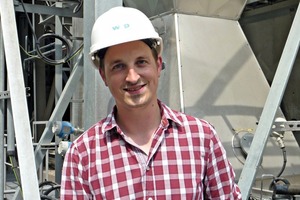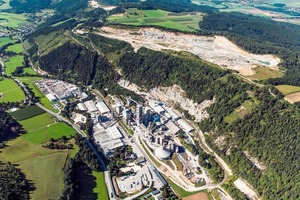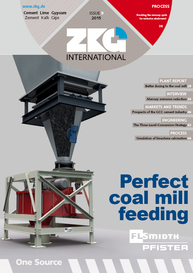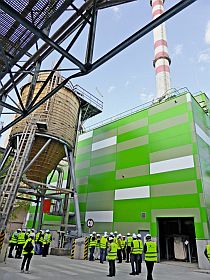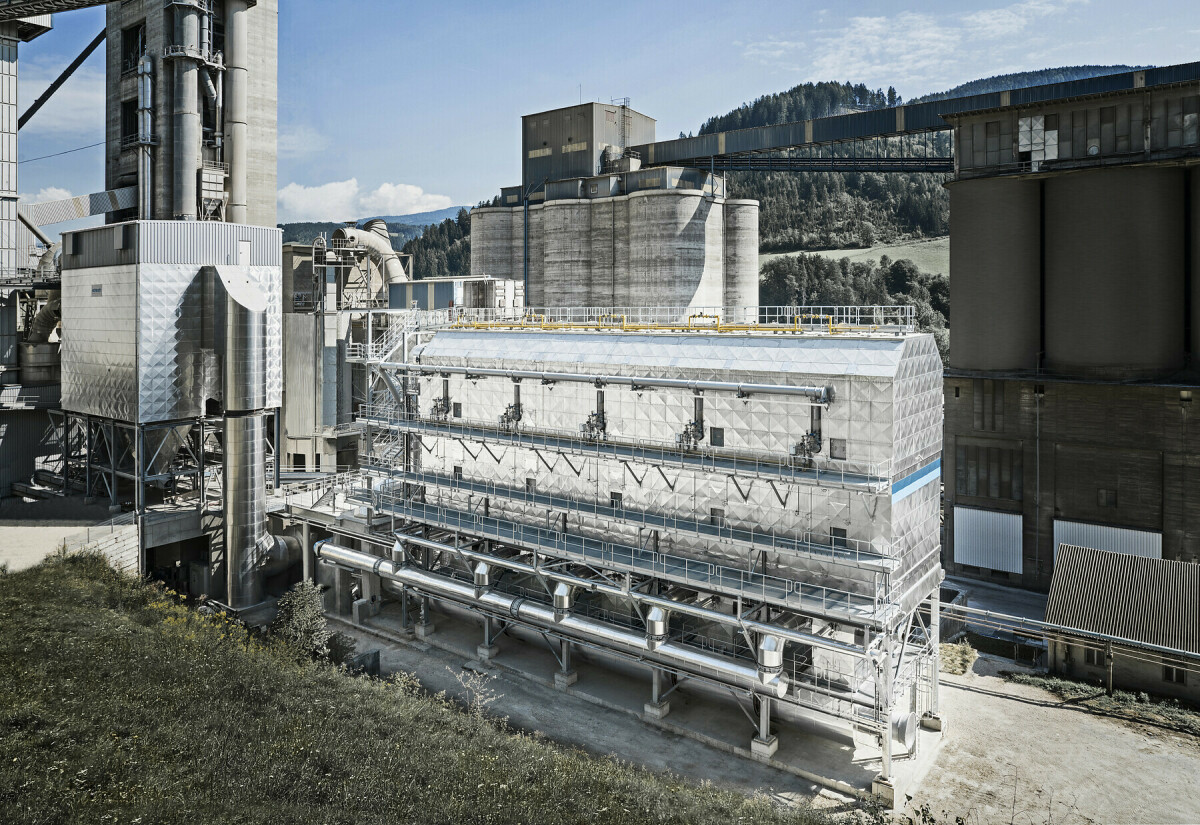Mercury emission reduction at Wietersdorf cement plant
Together with plant manufacturers Scheuch GmbH and A TEC, the W&P cement plant in Wietersdorf has developed ExMercury, a system for the reduction of mercury emissions. We talked to Dipl.-Ing. Florian Salzer (30), Head of Technology, W&P Zement GmbH, Wietersdorf/Austria, about the development and results of this pilot project, as well as the collaboration between the companies.
SALZER: We were achieving the previously valid mercury emission limit of 50µg/Nm³ without problems. But as from 2016, a more stringent value of 30 µg/Nm³ will apply in Austria. Right from an early stage, we attached great importance to compliance with the future mercury emission requirements. Sewage sludge, which we use as an alternative fuel, is known to be a major source of mercury. Since we wish to increase our usage of this CO2 neutral fuel, we started as long as four or five years ago to look for a solution with which we can safely reach the required 30 µg/Nm³.
SALZER: We knew, of course, that there are ways to discharge the accumulated dust in order to reduce the amount of circulating mercury. Our first step was therefore to observe our own mercury cycle. We also made a lot of measurements and even invested in our own mercury analysis instrument in order to get results quickly. Firstly, we produced all the balance calculations and established where the mercury actually originates. This analysis enabled us to clarify what individual quantities come from the raw materials, the coal and the replacement fuels. After evaluating all the balances, we saw that we would have to discharge a relatively large amount of filter dust. And you also have to look at what you can do with these quantities of dust. In our case, the amount of dust occurring would simply have been too big, and would have involved costly and complex disposal measures. We therefore looked around to see what systems were in use elsewhere.
Our main focus was on activated carbon fixed bed filters, which are mainly installed in refuse incineration plants. There is even one installation of this type in a cement plant in Switzerland.
However, the disadvantage of this type of system is that it entails extremely high capital investment and operating costs, which would have been untenable for us.
SALZER: We had already cooperated successfully with the companies Scheuch and A TEC in the past. We therefore got together four or five years ago to think about how we can reduce mercury emissions. Our considerations gave rise to the idea for the ExMercury system, and since then the idea has been further developed. Once the basic concept was in place, we conducted trials at the factory to determine whether the whole thing would work in the way we had conceived. These trials were to establish whether the effect on emissions came up to our expectations and whether the system was capable of long-term discharge of dust. And after we had discharged the material for a whole week, the results showed that we had a strong reduction in mercury concentrations. It was then clear that this long-term discharge of materials had a very positive effect. Our expectations of achieving a value below the future statutory limit of 30 g/Nm³ were even exceeded in the context of these trials.
The next step was to look at how we could reduce the mercury cycle. To this end, we carried out extensive studies in our laboratory. We subjected the dust to various temperatures in a muffle furnace and conducted repeated measurements to determine how much the dust has to be heated in order to ensure reliable mercury removal. In a temperature range between 300 and 400 °C, the mercury contained in the dust vaporized out completely.
Subsequent to all these studies, we designed the system. The big problem was that we wanted to remove the dust from the exhaust gases containing mercury but absolutely no system of the required size was available for the hot gas filter. Of course there are electrostatic precipitators, but these were not an option in our case, as we also have quite high CO concentrations in this plant section. Since the bag filter can only be used up to 250 °C, Scheuch decided to develop a totally new ceramic cartridge filter. A very important aspect for the project implementation was that we were financially supported within the framework of a pilot project by the “Kommunalkredit” funding agency in conjunction with the Federal Environment Agency and the Ministry of the Environment. After we had received the positive funding decision, we decided at short notice in the summer of 2014 to build the system as planned. Construction then commenced in October 2014 and we put the system into operation in April 2015.
SALZER: My enthusiasm about the system is undiminished. This project has really been a start-to-finish victory! We had set ourselves the ambitious goal of reaching a separation efficiency of 80 % by 2017. The degree of separation is so defined that we specifically remove 80 % of the mercury that is introduced via the raw materials, fuels and substitute fuels using the system, i.e. adsorb it onto the activated carbon. In actual fact, we already achieved an average of 80 % within the first three months, right from the start, using the basic settings. Of course, there are also situations in between where higher mercury concentrations occur. But it is a pilot project after all, and we must establish the cause of the deviations and find a way to get them under control.
SALZER: Collaboration with A TEC and Scheuch was very good; we were a great team and also had the right people working together. We always had very frank and open conversations, in which everyone made good contributions. Being familiar with the existing process, our cement plant team knew where to make process modifications. Scheuch was the expert for the filter technology, i.e. they developed all the equipment for the hot gas filter, the sorption reactor and the sorption filter. A TEC has long been our partner for the pyroprocess. Together with A TEC we had already implemented other projects involving the extraction of hot gas or partial gas streams from the system, so they already had this particular expertise.
The concept was thus worked out by all of us together and then implemented without delays and according to schedule. There were absolutely no problems, neither with the equipment itself nor with its delivery. Although system improvements so often become necessary in such projects, we had to make no significant changes. Our big advantage was certainly that we had had four or five years to refine the project. We had previously engaged ourselves so intensively with the concept that we were able to convince our associates to release the investment – and, it has indeed been a success. Now, in continuous operation, the system is running without any major problems. Of course, problems may still occur that we are not aware of today. But this is why we are running the research project, in which we will collect further insights over the next 1.5 years and also want to optimize the system even further.
SALZER: New challenges always present themselves. We are pursuing the ambitious goal of increasing the proportion of alternative fuels to 100 %. The Rocket Mill jointly developed with A TEC for grinding high-quality plastic has meanwhile become too small, so we have to invest in a larger system. We also need to expand the chlorine bypass.
With the mercury removal system we now have a solution that gives us security for the future at this location. We are already achieving emission figures that are lower than the 30 µg/Nm³ required as from 2016. Now we are trying to get the most out of the system. We meanwhile have data for operating resource consumption and are also very satisfied with that aspect. The system will consume about 20 t of furnace coke per year. This is not only a low consumption, but also a low amount of waste, since the exhausted carbon has to be disposed of.
We see another possibility for optimization in recycling the furnace coke. Here we want to work with companies that process the exhausted coke and recover the mercury as a valuable substance. Such companies exist in both Germany and Switzerland, and we are currently in contact with them. Our goal is to be able to recover the activated carbon and not to have to dispose of anything. But we also want to further optimize the system itself. Although it is currently running with the hearth furnace coke with relatively low operating costs, we would prefer to use an inorganic adsorbent in the future. For future worldwide application the system should also be smaller and have a lower construction cost outlay. And of course if it is no longer necessary to use hearth furnace coke, the entire explosion protection system can also be eliminated. That would not only make the system more cost effective but also safer.
In another research project, which we are running in cooperation with the Leoben University of Mining and our other project partners, and which is additionally financially supported by the FFG, we are performing test series and trying out inorganic adsorbents.
SALZER: The system is fully automatic and starts up and shuts down completely independently. It needs almost no intervention by operating personnel. This means that our employees have almost no additional burden. The only personnel workload is refilling the activated carbon and removing the exhausted coke. This is an additional time expenditure of about 2 to 3 hours per week
The fact that W&P has a very well equipped laboratory with qualified staff was very important for the project implementation. It was only possible because we had invested in our own analysis system for mercury determination, which enabled us to measure in real-time 3 x 5 samples per day. That would not have been feasible if we had employed an outside laboratory. Even now, we analyse 5 samples per day within the framework of continuous monitoring
SALZER: To protect our employees, we devoted great attention to the handling of wastes containing mercury. We integrated our personnel and also the works doctor very early into the decision-making process. Right from the outset, our goal was to build trust. We not only informed our employees, but also trained them, for example, with regard to the use of personal protective equipment. Procedures were developed and the personnel were instructed about the functioning of the system and the hazard potential.
However, we place great importance not only on openness with our employees. We also inform the public about our emission figures within the context of the “transparent factory”.
We are open to questions and willing to show this system to our colleagues from other cement plants. Together with our partners Scheuch and A TEC, we have an interest in making this system generally known. In this manner, we want to and can make a valuable contribution to the worldwide reduction of mercury emissions.
//www.umwelt.wup.at" target="_blank" >www.umwelt.wup.at:www.umwelt.wup.at

